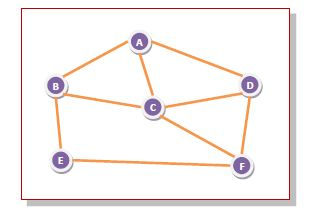
 Data Structure
Data Structure Networking
Networking RDBMS
RDBMS Operating System
Operating System Java
Java MS Excel
MS Excel iOS
iOS HTML
HTML CSS
CSS Android
Android Python
Python C Programming
C Programming C++
C++ C#
C# MongoDB
MongoDB MySQL
MySQL Javascript
Javascript PHP
PHP
- Selected Reading
- UPSC IAS Exams Notes
- Developer's Best Practices
- Questions and Answers
- Effective Resume Writing
- HR Interview Questions
- Computer Glossary
- Who is Who
Flooding versus Fixed Routing Algorithms
Flooding and fixed routing are methods to transmit data packets from the source to the destination through a number of intermediate routers connected by transmission lines.
Flooding is a non-adaptive routing technique following this simple method − when a data packet arrives at a router, it is sent to all the outgoing links except the one it has arrived on.
Fixed routing algorithm is a procedure that lays down a fixed route or path to transfer data packets from source to the destination. The route is a mathematically computed best path, i.e. “least–cost path” that the packet can be routed through. The routes are stored in routing tables that can change only if the topology of the network changes.
Example
For example, let us consider the network in the figure, having six routers that are connected through transmission lines. We suppose that there is a data packet that must send from router A to router F.

Using flooding technique −
An incoming packet to A, will be sent to B, C and D.
B will send the packet to C and E.
C will send the packet to B, D and F.
D will send the packet to C and F.
E will send the packet to F.
F will send the packet to C and E.
Fixed routing algorithm computes the best path among numerous paths. There may be a number of paths like (A–B–E–F), (A–C–F), (A–D–F), (A–B–C–F) and so on. Fixed routing may choose the best path as (A–D–F) and all data packets will be routed via this path.
Comparison between Flooding and Fixed Routing
| Flooding | Fixed Routing |
|---|---|
| It is a simple technique that does not require complex algorithms. | It is more complex and requires specific algorithms. |
| No routes are created and so there is no requirement of routing tables. | Fixed routing algorithms compute an optimal path that is stored in a routing table. |
| It always finds the shortest path. | It finds the optimal path, which may or may not be the shortest path. |
| The packets always find a way to the destination, even when a large number routers malfunction. | The packets may not reach destination if routers malfunction. |
| It tends to generate a large number of duplicate data packets. | It does not create duplicate data packets. |
| It generates a huge volume of traffic that may reduce the throughput of the network. | It does not create unnecessary traffic. |
| It wastes bandwidth. | It does not waste bandwidth. |
| It is suited for broadcast messages. | It is suited when there is a single destination. |

